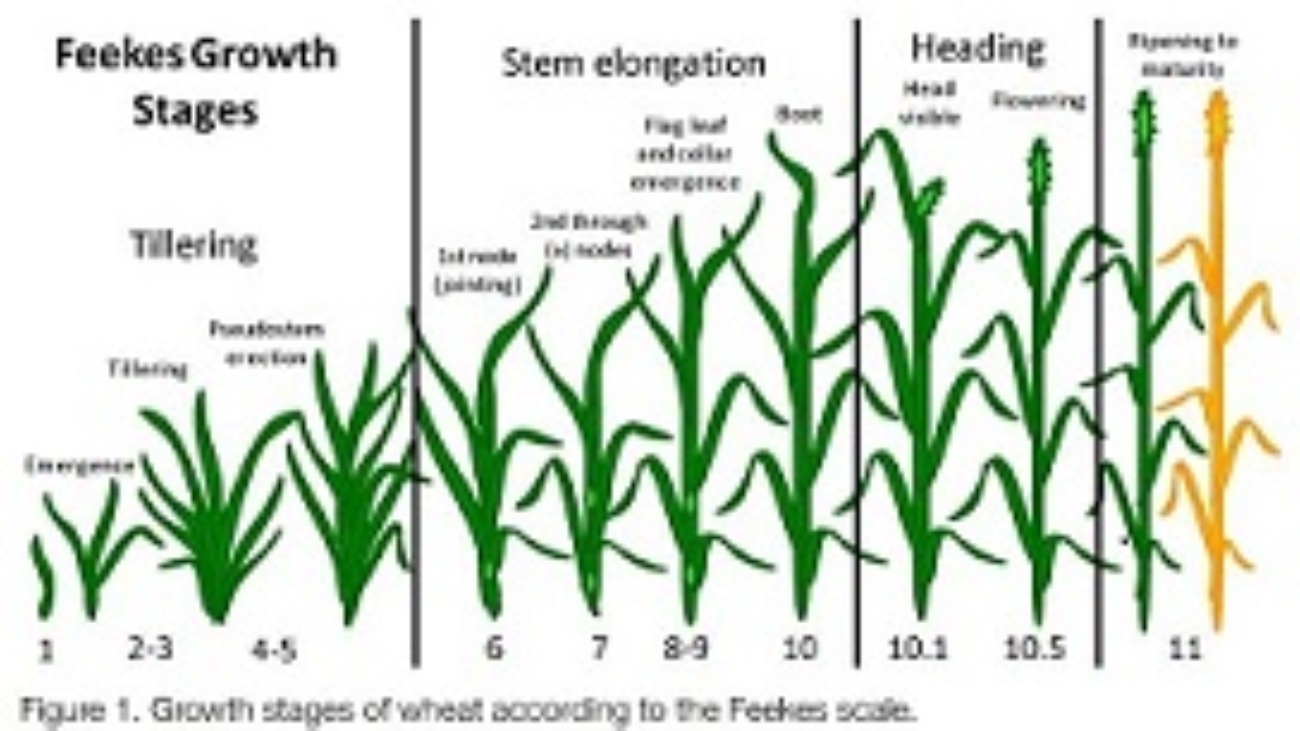Hello All,
Another week and yet more interesting weather. The most interesting was he had 6” of snow with no wind as they were predicting. As a result most of the wheat had snow laying on top of it when the extreme cold temps came. This was very beneficial. I have looked at some wheat this weekend and see no ill effects at this point. There was not a lot of moisture in this event but it was still wetter than we had been and more importantly, it covered a fairly large area this time. Once things do finally dry out things will start getting busy quickly.
I continue to recommend that separating the fertilizer and herbicide is the best agronomic decision. Remember to have this on before joint for the most impact on yield. This will happen rather quickly once the wheat starts developing.
After looking at several fields yesterday I feel fairly confident that the impact of the recent cold temps was negligible. I am starting to find a few winter annual weeds in some fields this may increase with the surface moisture we have now.
Now I would like to take the time to discuss weed management in this wheat. Weeds can compete for water, nutrients light and space. They can decrease yield cause harvest problems as well as combine wear. This is not an exhaustive list however it does demonstrate the importance on weed control. When considering weed control in winter wheat this is a process that starts management before and then after seeding. The goal is to achieve a good stand to help the wheat compete. Unfortunately for reasons out of our control many of the stands are not as ideal as we would like. Now we are faced with a potential problem. When making weed management decisions we will need to know what weeds we are dealing with. There are two main categories winter annuals and spring annuals. We have some fields now with winter annual broadleaves but, the main concern going forward would be the spring annual broadleaves. There are some fields with winter annual grasses as well and in many cases we have incorporated Clearfield (imazamox) or Coaxium (quizolafop)wheat to combat some of these. Once we know the type of weed or species we are concerned with then we need to make a plan. For example, if our only concern is spring annual (kochia, russian thistle) then we would want to use a product with soil activity. Waiting until the weeds are emerged can be a bit late for many products. Normally we use a combination of growth regulators and als sulfonylurea herbicides. The later will give some residual control for approximately 3-4 weeks. One caveat, there is a fairly substantial als resistant so the addition of dicamba can help combat this. The problem with pgr herbicides once the wheat begins jointing we can see some negative yield consequences. Plant growth regulator herbicides as their name implies, mimic many of the growth hormones in the plants. When a plant starts to growth reproductively the hormones natural hormones in the plant are more active so a negative response to a herbicide from this class would be more significant. So it is best normally to have fields treated before Feekes 6. I am not saying we can not use a growth regulator after this I am just illustrating the concerns of doing so. I would like to add that we must omit dicamba from any mixes after Feekes 6 with no exception.
As with top dress everything revolves around that critical jointing growth stage. This as you recall is the plant making the transition from vegetative to the reproductive stage. Please be mindful of the developmental stage of the wheat you are treating before doing so. If you are making an application after joint I would suggest utilizing a bio stimulant in the tank to help the plants be able to detoxify more rapidly.
Glen W. Teels
Agronomist
Pathway Ag

